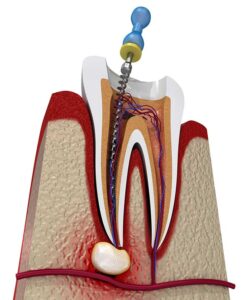What is endodontics treatment
When excruciating tooth pain strikes, and your dentist suggests a root canal treatment, it’s natural to feel a mix of anxiety and curiosity. Root canal treatments, also known as endodontic procedures, are designed to alleviate severe tooth infections and save teeth from extraction. In this comprehensive guide, we will delve into the five crucial phases of a root canal treatment, exploring the procedure’s intricacies and shedding light on why it’s a vital solution for tooth preservation. When confronted with the discomfort and relentless pain associated with a tooth in distress, the prospect of a root canal treatment, or endodontic procedure, may be recommended by your dentist. At the heart of this intricate dental intervention is the expertise of an endodontist, a dental specialist trained in the diagnosis and treatment of issues pertaining to the tooth’s innermost structures. In this comprehensive exploration of the five pivotal phases of endodontic treatment, we unravel the complexities of root canal procedures, shedding light on the role of the endodontist in Pasadena, where modern technology and techniques have transformed this once-feared process into a comfortable and often life-saving dental solution.

I. Understanding the Need for Root Canal Or Endodontics Treatment
A. What Is A Root Canal?
A root canal is a dental procedure aimed at repairing and preserving a severely infected or decayed tooth. Endodontics treatment involves the removal of the infected nerve and pulp from the tooth’s root canal, followed by thorough cleaning and sealing to prevent further infections.
II. Why Do You Need a Root Canal Treatment Or Endodontics Treatment
This section expands on the necessity of root canal treatments, debunking myths and addressing common concerns. It emphasizes the pivotal role these procedures play in saving infected teeth, providing reassurance to individuals contemplating this intervention. By elucidating the painless nature of the treatment and offering a step-by-step guide, the aim is to alleviate any apprehensions associated with root canal procedures. Root canal or endodontics treatment becomes necessary when an infection penetrates deep within the tooth, often resulting from an untreated cavity or dental trauma. Without timely intervention, the infection can escalate, leading to the potential loss of the tooth. Root canal treatment serves as a crucial preventive measure against such outcomes.
III. The Root Canal Or Endodontics Treatment Procedure Explained
